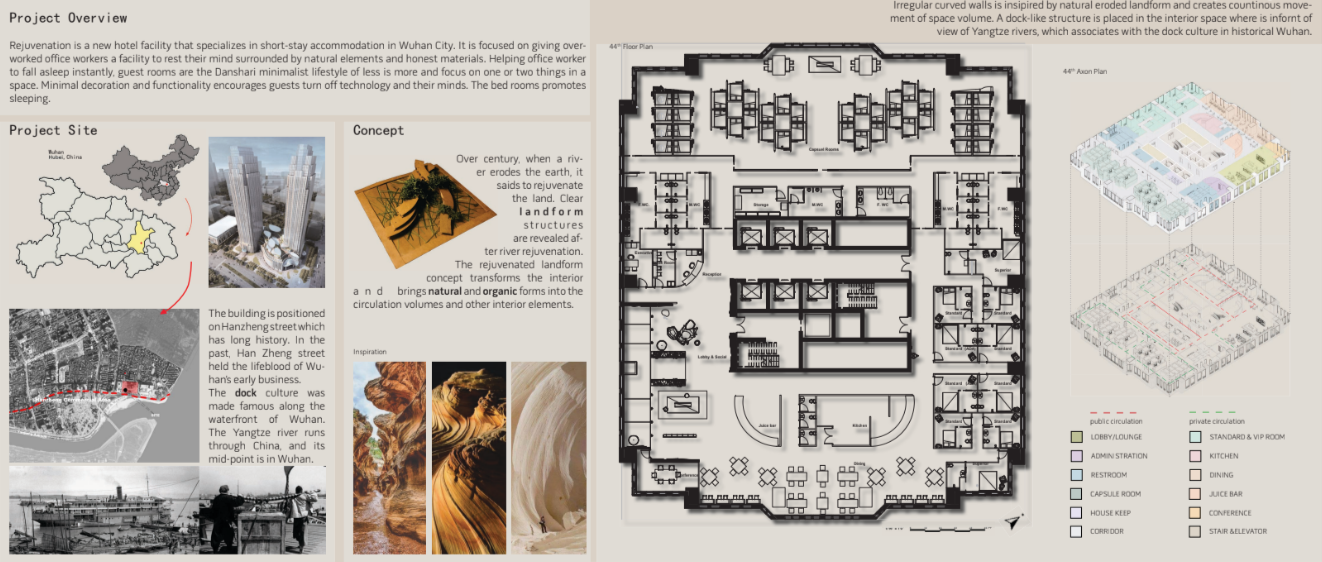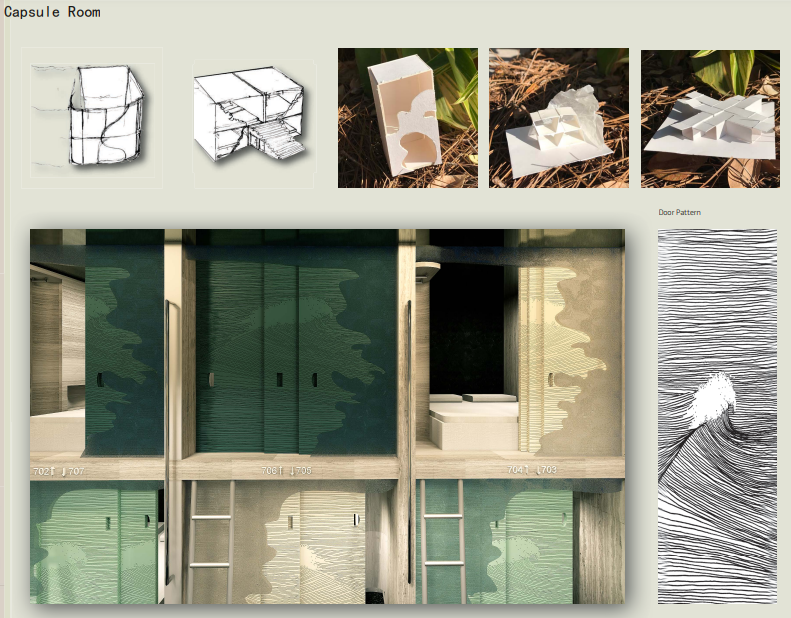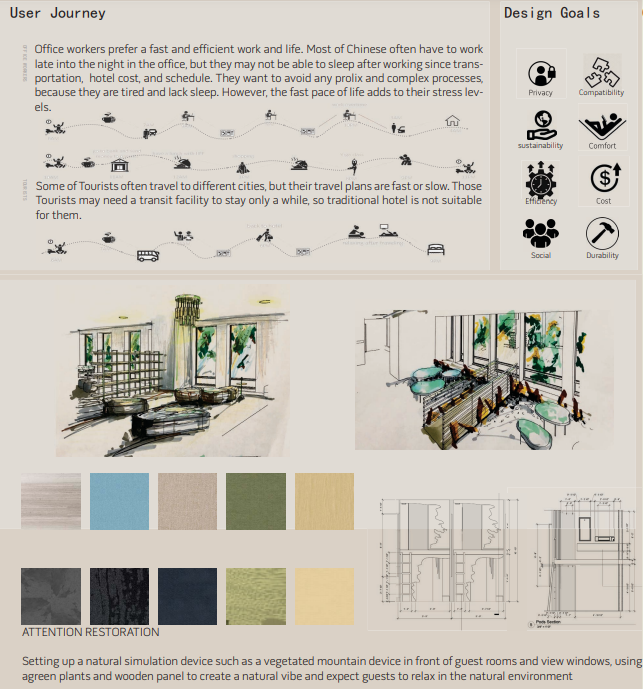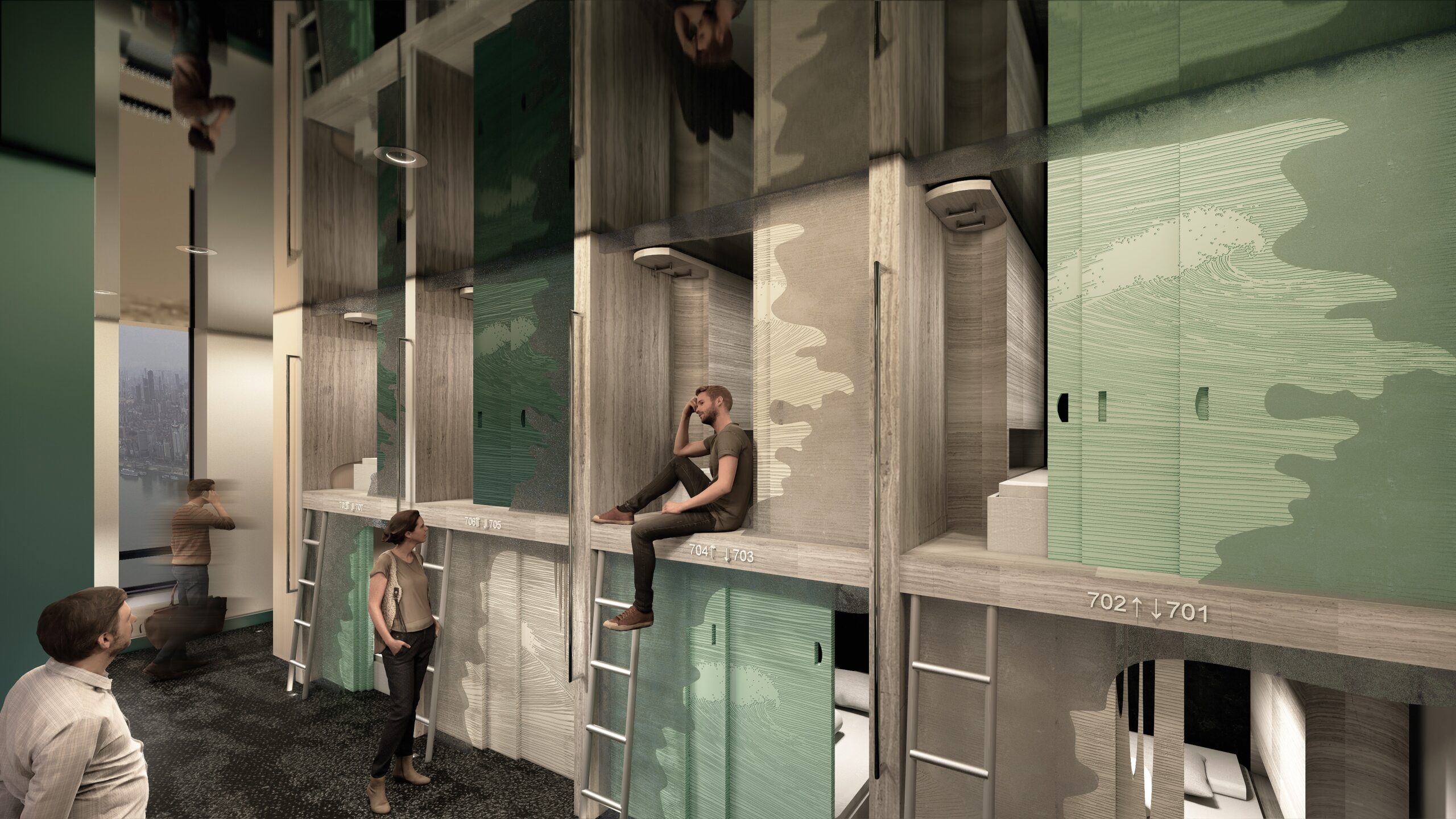Q: Congratulations on your recent IDA awards! Can you share with us what inspired the winning design in the Hospitality Interior Design / Hotels category?
One of my awarded projects, Rejuvenation, is a new hotel design specializing in short-term accommodation. It was inspired by a social issue prevalent in fast-paced city life. Many office workers often have to work overtime and sacrifice most of their personal time, even to sleep. Rejuvenation provides affordable accommodation after working overtime and helps heal physical and psychological conditions through biophilic design principles.
Q: What trends do you see currently shaping the interior design industry, especially in the hospitality sector? How have these trends influenced your work?
Sustainability within design is one of the most vital strategies in the entire interior design and architecture industry, especially in the hospitality sector. It’s more durable and promotes wellness for clients while being environmentally friendly. This is a key design strategy for my project. Using honest materials and bringing greens into the space are good examples.

Q: Your firm has received notable recognition in the 2024 IDA Awards. Can you tell us more about the firm’s philosophy and approach to design?
This is my personal project. Design is about humanity, with the ultimate goal being to benefit life and enrich the spirit. A successful design includes meeting the needs of the client, society, and the world. Human beings are visual creatures; no matter how meaningful the invention is, design should include aesthetics to enhance functionality and performance.
Q: Could you walk us through the design process for your award-winning projects? What were the main challenges and how did you overcome them?
The hardest part was collecting information from clients. I did not know the specific clients who would use the hotel. However, I determined the primary and secondary users and analyzed data from surveys and case studies.
Q: How much time did the design and execution of these award-winning projects take?
The design was completed in 20 weeks.


Q: What were some of the key milestones in these projects?
Discovering was one of the key milestones. I developed the project proposal, selected the research method, collected data, conducted a literature review, and selected and analyzed clients. This phase was crucial in determining the problem and uncovering if the concept would work.
Q: Winning the IDA awards is a significant achievement. How has this recognition impacted your career and your firm’s reputation in the industry?
It is good to expose my project, allowing more clients and competitors to recognize my design.
Q: Sustainability and innovation are becoming increasingly important in interior design. How do you incorporate these elements into your projects?
Sustainable design is a principle that is increasingly part of universal consciousness. Integrating humans with nature in the interior environment is critical to the success of a design. I use biophilic design principles, utilizing honest materials and bringing greens into the space.
Q: Can you share a particularly memorable moment or experience from the journey of designing your award-winning projects?
During the survey, I directly understood what clients really need from this space through their different stories. I remember interviewing a technology office worker who had to work until 2 or 3 am. He usually stayed at the office to sleep rather than going home because there was no public transportation, and taxis or Uber were too expensive. This inspired me to make “affordable” one of the main characteristics of the hotel design.
Q: What advice would you give to aspiring interior designers who aim to achieve similar recognition in their careers?
I encourage designers to observe different industries and people to gain diverse insights into understanding each client and space.
Q: Looking forward, what are your plans for future projects? Are there any new trends or ideas you are excited to explore?
Sustainability. I’m always looking forward to new sustainable techniques and materials.

Q: How do you balance creativity and practicality in your designs, especially in commercial and hospitality projects where functionality is crucial?
Balancing creativity and practicality is essential in commercial and hospitality projects. It primarily depends on the clients’ needs and goals. First, I engage in thorough discussions with clients to understand their vision, functional requirements, and budget constraints. This helps in setting clear expectations and enhancing the user experience.
Q: What role does client collaboration play in your design process? How do you ensure that the client’s vision and requirements are met?
Clients inspire me a lot. They describe their stories, problems, or needs, and I always have new ideas.
Q: The interior design industry is constantly evolving. How do you stay updated with the latest trends and technologies?
I explore related magazines, websites, and competitions. I learn new ideas from other projects.
Q: Lastly, how do you define success in interior design, and what are the key elements that contribute to a successful project?
I believe a good design should be human-centered and environmentally friendly in the long run.